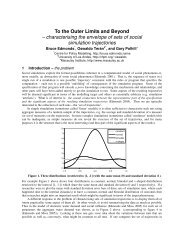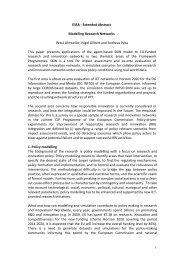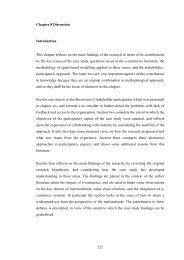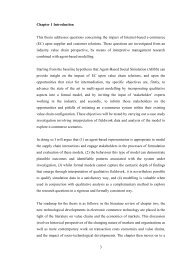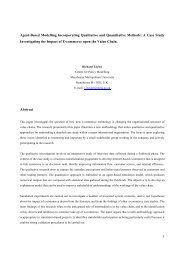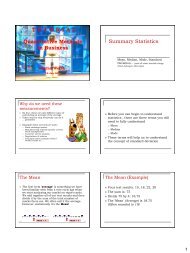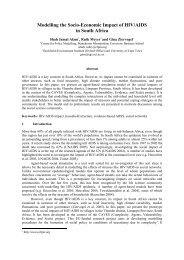7 Chapter 2 Literature Review: Markets, Intermediation and E ...
7 Chapter 2 Literature Review: Markets, Intermediation and E ...
7 Chapter 2 Literature Review: Markets, Intermediation and E ...
You also want an ePaper? Increase the reach of your titles
YUMPU automatically turns print PDFs into web optimized ePapers that Google loves.
2007, <strong>and</strong> estimated a fall in market share for both national / global agencies <strong>and</strong> for<br />
independent local agencies. The author concludes that “travel agents face serious<br />
competition from both airline direct services <strong>and</strong> from cybermediaries” (McCubbrey<br />
1999).<br />
This analysis points towards the intuitive conclusion of widespread disintermediation<br />
in this industry. But is it supported by other research? Chircu <strong>and</strong> Kauffman (2000)<br />
carried out a longitudinal study of the corporate travel industry over the period 1995-<br />
1999 in which they investigated the activities of five representative travel agencies<br />
developing services for online booking via the Internet. The authors reported the<br />
significant impacts of online bookings on the strategic positioning of the five<br />
companies. The first company to enter the market was an e-commerce only company,<br />
but shortly thereafter the established travel agents started to develop their own<br />
computerised reservation systems <strong>and</strong> regain market share. Three distinct<br />
reintermediation strategies were identified: forming alliances for technology<br />
development, portfolio partnering with several technology providers, <strong>and</strong> strategies<br />
involving technological focus, market timing <strong>and</strong> pre-existing industry expertise. The<br />
reasons the traditional travel agents were able to reintermediate are related to the ease<br />
with which existing services could be imitated, the ownership of cospecialized assets<br />
of traditional agents that could not be imitated (for example, the ability to negotiate<br />
with suppliers, knowledge of non-routine travel reservations, etc.), <strong>and</strong> economies of<br />
scale that come with having a large existing customer base. The authors suggest that<br />
their analysis might generalise to many other industries affected by e-commerce,<br />
concluding that:<br />
“…traditional nontechnological middlemen have a greater opportunity than<br />
heretofore claimed by most analysts to reintermediate in the long run, <strong>and</strong> even to<br />
strengthen their position in the market as e-commerce-able intermediaries”. (Chircu<br />
<strong>and</strong> Kauffman 2000, pg. 35)<br />
This research appears to throw doubt over our earlier intuitive conclusion. However,<br />
upon closer inspection of this study, we can argue that Chircu <strong>and</strong> Kauffman consider<br />
only the large companies participating in Internet-based e-commerce. For smaller<br />
companies, such as those considered by McCubbrey there may indeed be risk of<br />
39




